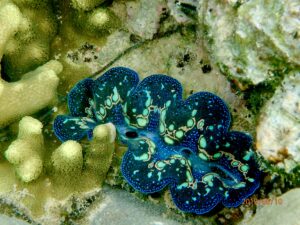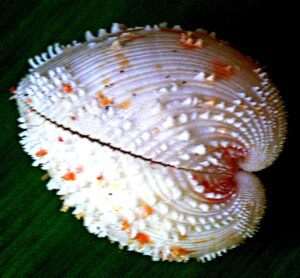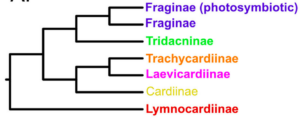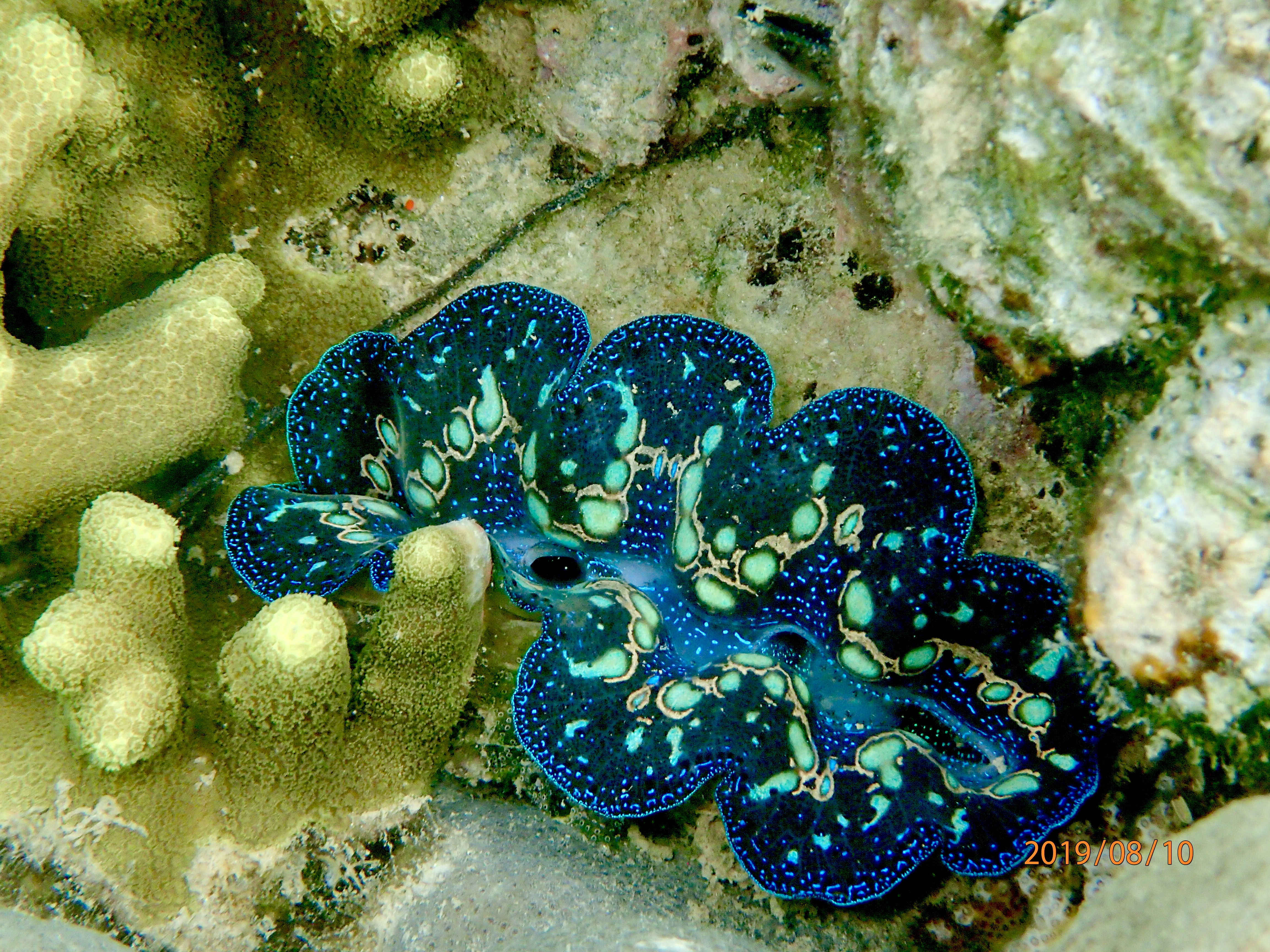Li, J., Lemer, S., Kirkendale, L. et al. Shedding light: a phylotranscriptomic perspective illuminates the origin of photosymbiosis in marine bivalves. BMC Evol Biol 20, 50 (2020). https://doi.org/10.1186/s12862-020-01614-7
From preying upon large fish to obtaining energy from chemicals, marine organisms use a wide variety of methods to obtain nutrients. You may have heard that some organisms, like corals, even get nutrients from the sun. Corals have formed a symbiotic relationship with tiny algae that undergo photosynthesis. In fact, corals aren’t the only organisms that do this. It turns out that marine clams also harbor photosynthetic algae and gain nutrients from sunlight. Two vastly different groups of clams both host these photosynthetic algae. Li’s team uses phylogenetics to determine whether the photosymbiosis evolved independently in each group or from a common ancestor.

Giant Clams vs. Not-So-Giant Clams
Within the family Cardiidae, or marine bivalve mollusc, there are only two subfamilies of clams that use photosynthetic algae to obtain nutrients. These are the vibrant giant Tridacninae clams (Figure 1), which grow up to 1.2 m, and the not-so-giant Fraginae clams which only reach about 10 cm (Figure 2). Unlike the burrowing Fraginae clams, Tridacninae clams anchor themselves to the reef and display a colorful mantle containing photosymbiotic algae. But Fraginae clams have a different method for getting some sun. In addition to gaping just above the sediment, some species of Fraginae clams have what is called a “shell window”. This translucent shell window allows some light to reach the photosynthetic algae within the clam. With such different methods for catching some sun, the question stands as to whether both clam subfamilies evolved photosymbiosis together.

A Clam Family Tree
Li’s team used a variety of methods to construct a phylogenetic tree, or diagram that shows evolutionary relationships, between the two clam subfamilies. They collected RNA from 24 photosymbiotic clams and 9 outgroups, or groups of organisms that do not belong to the Cardiidae family. With genetic data, they were able to identify genes that were common among all of the samples. Finally, using software, the team created the most likely phylogenetic tree for Tridacninae and Fraginae (Figure 3). According to the tree, Tridacninae and Fraginae are sister groups, or closest relatives that diverged fairly rapidly during the Cretaceous period (145-66 million years ago).

Evolution of Photosymbiosis
The team’s genetic analyses also indicate that the two clam subfamilies did not inherit the photosymbiosis trait from a common ancestor. This means that both Tridacninae and Fraginae established photosymbiosis independently, perhaps in response to an environmental trigger. The team suspects that both subfamilies were forced to evolve this photosymbiosis in order to cope with the lack of nutrients in their environments. Photosymbiosis evolved in both groups around the time when reefs expanded into shallow, sunlit areas. The relocation into shallower sunny areas is another possible trigger for the photosymbiotic adaptation.
Li’s team helped to determine the origin of photosymbiosis in marine clams, organisms that are essential to many marine ecosystems. The evolution of photosymbioses often leads to rapid diversification and influences various cycles in the marine environment. To understand how marine environments change over time, we must look beyond marine clams and also address other photosymbiotic organisms.
Constance is a graduate student at the University of Guam studying coral genetics. She also paints murals integrating art and science at various aquariums and scientific institutions (IG: @coco.paints).


